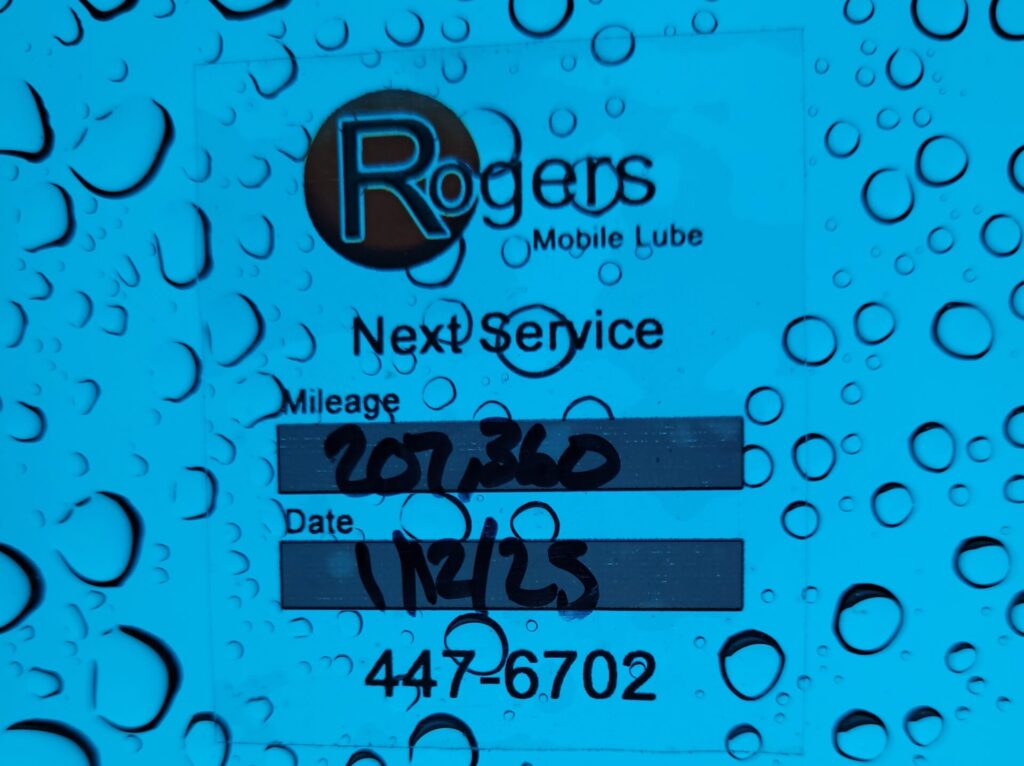
I Still Have Not Reached the Mileage On Your Sticker, Let’s Wait…
“Mr. Johnson, it is time to change the oil in your truck.”
“Thank you for calling Riley, but I still have 5,000 miles to go until I get to the mileage on my sticker. Let’s just wait until then.”
This exchange happens quite often in our world. We change a customers’ oil with Amsoil Signature series synthetic motor oil which has a recommended change interval of 1 year or 15,000 miles, whichever comes first. The key words here are “Whichever comes first.” Sometimes the owner of the vehicle in question hears the 15,000 miles part but does not see the importance of the 1 year part. I want to discuss why leaving old motor oil in your engine longer that the oil manufacturer recommends is almost always a bad idea. See our post on Oil Analysis for more information. https://rogersmobilelube.com/what-is-oil-analysis/
Oil manufacturers, like Amsoil, put a lot of time and scientific research into their products. Through this research, they create recommendations that they have proven in their laboratory to be safe operating parameters. These parameters should be respected, after all, the engineers who do this for a living know what they are doing.
Let’s discuss what happens to engine oil that is unique to this lubricant. Have you ever thought that your engine oil is the only lubricant in your vehicle that becomes contaminated with combustion gases? When these gases mix with the oil, they create acid. Acid is not a friend of the metal parts inside your engine. Over time, the oil will not be able to resist the acid and the acid begins to slowly eat the metal parts. Metal parts that sit still for long periods of time will hold a small amount of this acidic oil anywhere there is an area of tight clearance. Think for example of where the piston rings contact the cylinder wall, or the camshaft contacts the lifters. This oil will gradually etch into the surface of these parts. The longer it remains in one place, the deeper the etching. The imperfections then cause accelerated wear. Sometimes the etching is deep enough to cause immediate, catastrophic failure.
The point of all this is that the manufacturer of the oil really does know what is best. They know of and have observed problems that you as the owner have probably never even thought of so, when they say something like “15,000 miles or 1 year whichever comes first” it is always best to heed that advice.
Authored by Riley Rogers
